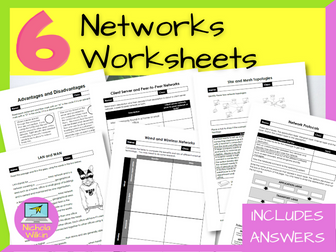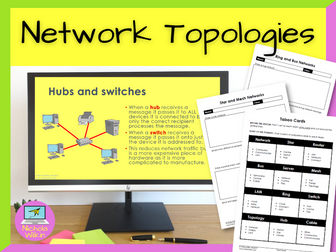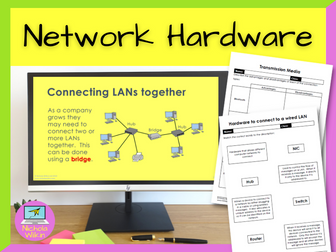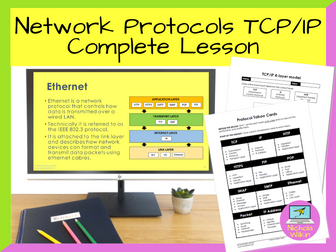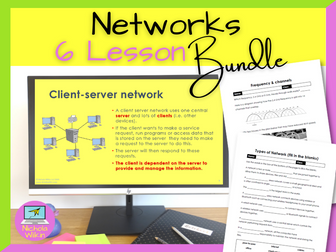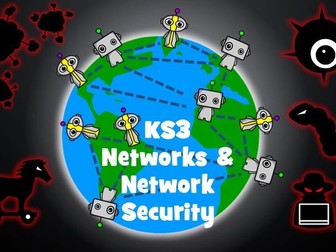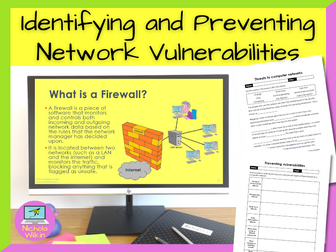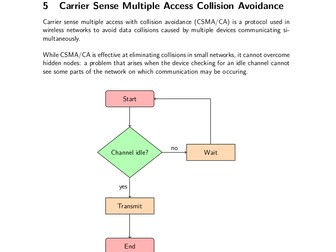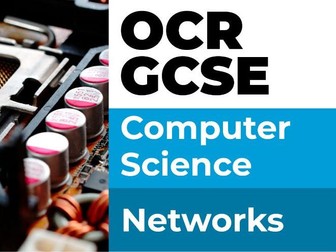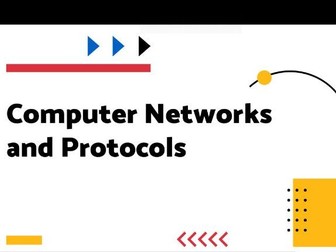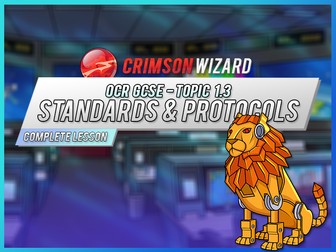
Networks Worksheets
Here are 6 ready to use network worksheets you can immediately use with your class with absolutely no preparation necessary.
They can be printed out or completed on-screen as they comprise of PDF files with editable areas for students to enter their answers. You can even assign these worksheets as learning tasks using a VLE for students working at home.
You even have a separate copy of each handout that contains the answers, making these a brilliant easy to use addition to your teacher toolkit.
HOW CAN I USE THEM?
These worksheets are ideal for
An easy grab-and-go classroom activity,
homework tasks and
cover worksheets.
.
These engaging worksheets are perfect for computer science teachers, non-specialists and new teachers.
WHAT IS INCLUDED?
The 6 PDF worksheets included:
Advantages and Disadvantages of Networks – An easy worksheet where students are given a number of statements and need to decide if it is an advantage of disadvantage of using a computer network. A great starter worksheet when first introducing networks.
LAN and WAN Fill in The Gaps – Students use a list of given words to complete the short text about Local Areas Networks and Wide Area Networks. A nice plenary activity to recap what they have learnt.
Client Server and Peer-to-Peer Networks – A mid-level worksheet where pupils need to decide if the statement is about a client server network or a peer-to-peer network, or both.#
Wire and Wireless Networks – Pupils need to do a bit of research and write about the benefits and risks of using ethernet copper cables, fiber optic cables, Bluetooth networks and wi-fi networks. Great as a homework task.
Star and Mesh Topologies – Students identify a star and a mesh diagram from a drawing. They are also given several scenarios and have to decide if a star or a mesh topology would better fit the needs described. Finally students must write about the difference between a switch and a hub. Great as a homework task.
Network Protocols – match the protocol layer to the description and then identify the protocols which are in a 4-layer TCP/IP protocol layer. A higher level worksheet that is great for assessing pupils understanding of a 4-lay TCP/IP protocol.
Don’t forget the answers to each worksheet are included meaning you can use the answers yourself or give them to students for self-marking.
These 6 worksheets will quickly become an essential tool in your teacher toolkit.
They are a great way to break up the lesson, reinforce the learning and check your pupils’ understanding of networks.
What are you waiting for? Buy them now and use them straight away to enhance your lessons whilst saving yourself hours of preparation.
